How Do the High-Voltage Circuit and Magnetron in a Microwave Work?
We're going to take a dive into what exactly is going on electrically with the high-voltage circuit in a microwave. We'll use this specific schematic as an example, but these principles apply generally.
Don't worry about most of the schematic. All that matters to us right now is the high-voltage section -- the transformer on the right side of the schematic and everything to its right.
If you're not familiar with how magnetrons work (or even what they are), then this circuit probably doesn't make much sense to you. Why all the ground connections? What's the purpose of the capacitor and diode? What's with the two different secondary windings of the transformer?
Let's start by taking a look at how a magnetron works. Here's a cross-section that shows you the guts of one of these things.
There's a lot of cool stuff that goes in with a magnetron, but we'll just focus on the basics.
The magnetron is the device that produces the microwave radiation that heats food within the appliance. This is done by applying a very high voltage to the cathode of the magnetron, usually around 4,000 volts. This voltage forces electrons to jump ship, arcing through the air (actually it's in vacuum) to the anode, which is the shell surrounding the cathode. The anode is fitted with cavities (seen above), and as electrons zip past these cavities, they produce microwaves. These microwaves are then guided into the food cavity of the appliance.
We're just skimming the surface here, but that's all we need to know as techs: when the magnetron is supplied with the proper voltage of 4,000 volts, it will perform its function. But 4,000 volts is a lot compared to the 120 volts that the appliance gets from the wall outlet. How do we get that? Well, that's exactly what all those components in the high-voltage circuit do.
The first step is the transformer, which steps 120 VAC up to 2,000 volts. That's a huge increase, but it still only gets us half the way. We need to find a way to double that voltage -- and as it turns out, there is a handy circuit configuration for this called, predictably, a voltage doubler. There are a many different kinds of voltage doubler circuits, but this machine uses a pretty simple one called a Villard circuit. A Villard circuit doubles voltage in choppy pulses. This is because it requires one half of the AC power cycle to charge up, and then the other half to discharge.
Let's take a look at what we mean by that, one half-cycle at a time.
During this charging half-cycle, the magnetron is not producing any microwaves. Instead, electrons are being sucked up from ground, through the diode, and stored in the capacitor.
At this point, I can also explain what the point of the low-voltage winding and the "red tube" and "black tube" are. All that does is pass a tiny current through the cathode to keep the magnetron warm during this half-cycle. Those "tubes" are just standard wires. Why are they called tubes? Korenglish, baby.
So, at the end of this half-cycle, we have 2,000 volts stored in the capacitor, and we're ready to flip polarity. Let's see what happens then...
(Note: It's not really an air gap because the cathode and anode are inside a vacuum tube.) Here we see the Villard circuit do its thing: the 2,000 volts that we stored during the charging half-cycle add to the 2,000 volts on the high-voltage transformer secondary, producing 4,000 volts. Since the diode only allows current to flow one way (the way it was flowing during the charging half-cycle), current can't just flow directly back to ground. Instead, it's forced to jump the gap in the magnetron, producing all those microwaves.
Here's what the voltage sine wave looks like across multiple cycles:
After the electrons jump the gap in their quest for Ground, the magnets prevent them from taking a straight path and force them to whiz by the open resonant chambers. As they do this, they produce electromagnetic waves in the microwave spectrum. It actually works very much like when you blow through a whistle, except it's electrons moving past the cavities instead of air particles, and microwave radiation that gets produced instead of sound waves. This microwave radiation is then directed into the cooking cavity to warm the food.
Cool stuff, right? Want to learn more about the technologies common to all appliances, and how to apply that knowledge to real-world troubleshooting? Click here to check out the Core Appliance Repair Training Course over at the Master Samurai Tech Academy.
-
.png) 9
9
-
 3
3




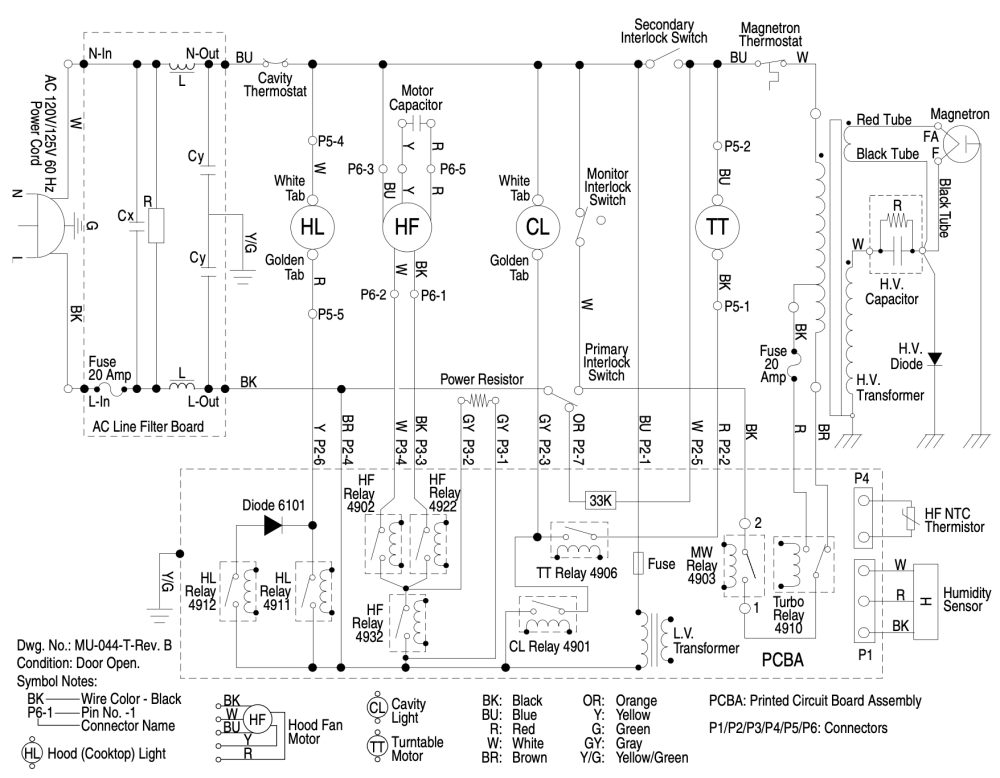
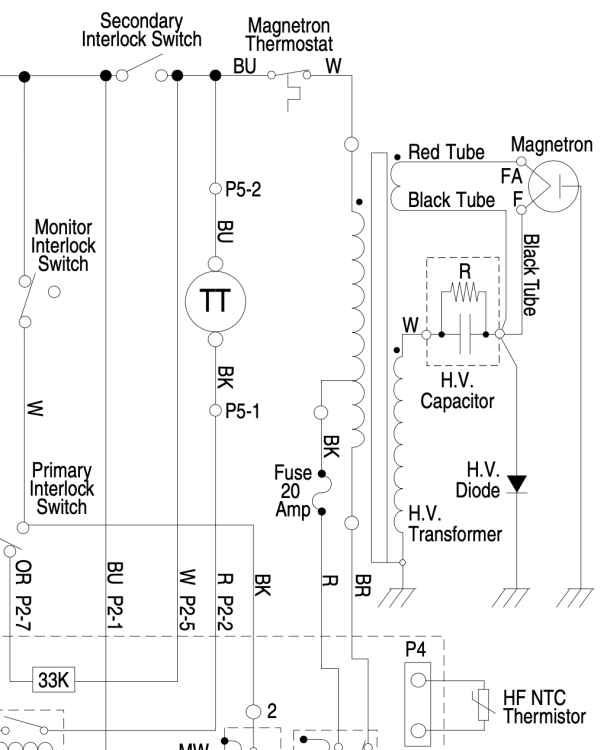
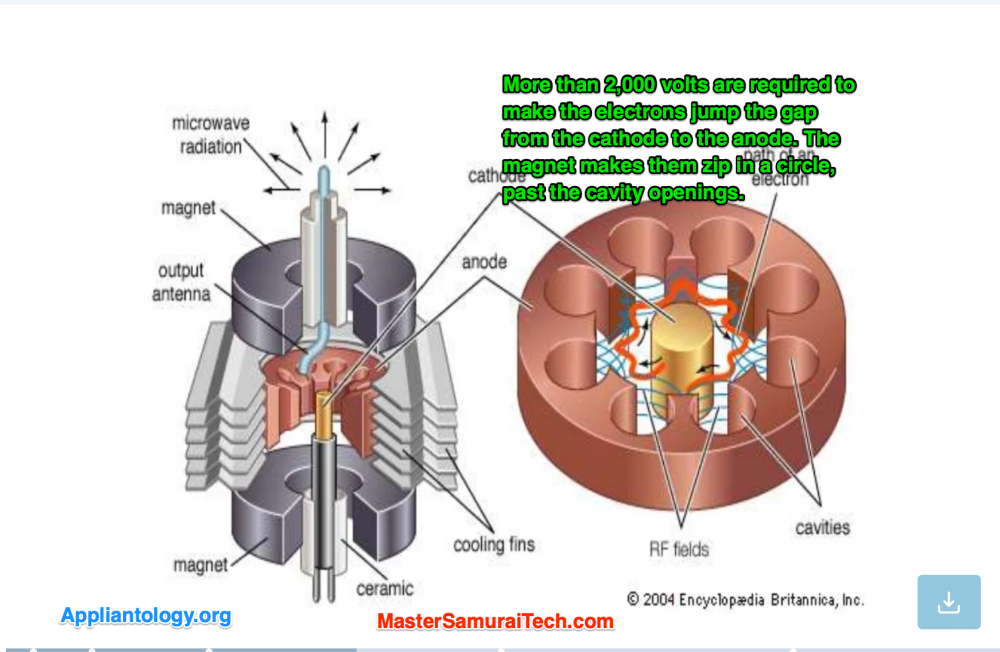
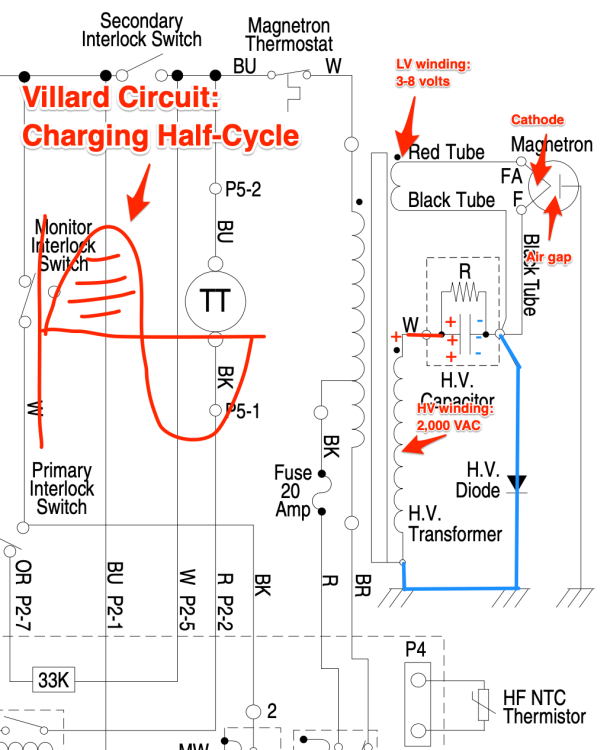
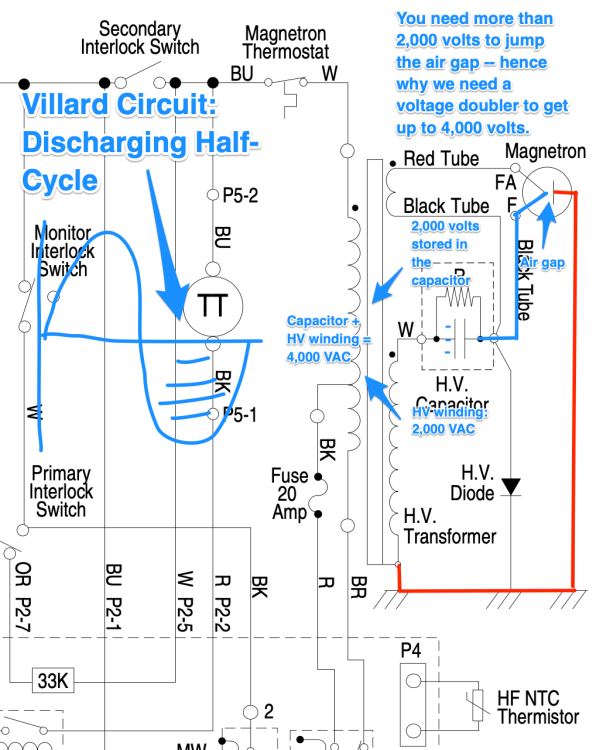
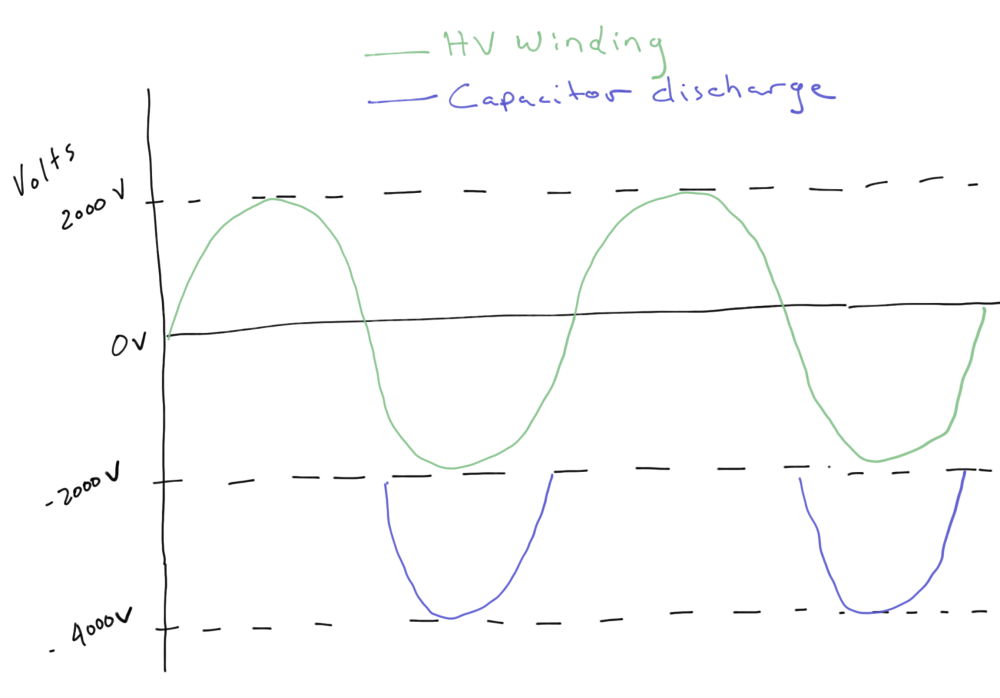
17 Comments
Recommended Comments